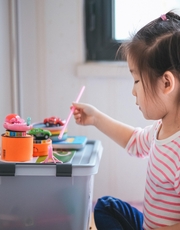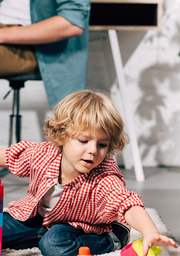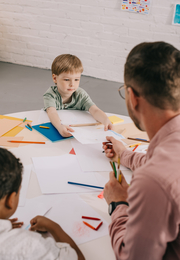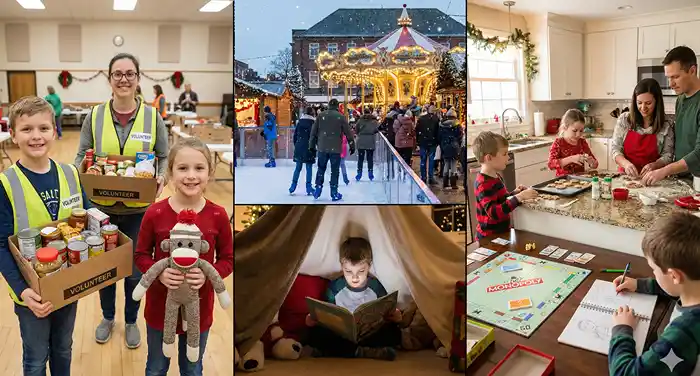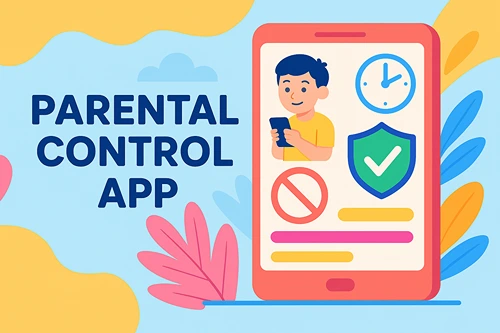Fun Activities to Stimulate Your Child’s Mind and Ignite Lifelong Learning
As parents, nurturing a child’s curiosity and fostering a love for learning is paramount in their developmental journey. Engaging them in activities that entertain while simulating their minds can lay the foundation for a lifetime of exploration and intellectual growth.
By incorporating playful yet educational experiences into their daily routines, you can ignite a passion for learning that lasts a lifetime. Here are some fun activities that will captivate your child’s imagination and promote lifelong learning.
Exploration through Nature Walks
According to the Raising Children Network, nature walks offer a treasure trove of learning opportunities for children.
As they step outside, they encounter a living classroom teeming with biodiversity. Encourage your child to observe closely, noting the shapes of leaves, the colors of flowers, and the behaviors of animals.
These walks not only cultivate an appreciation for nature but also develop observational skills and scientific curiosity. Additionally, exposure to outdoor environments has been linked to improved mental well-being and cognitive development in children, making it a holistic learning experience.
Creative Arts, Crafts, and Coloring
As noted by Parents.com, by age 3, children exhibit substantial growth and developmental milestones, marking an important stage in their journey. Engaging in arts and crafts activities unleashes a world of imagination for children.
Whether they’re painting a masterpiece, coloring, sculpting with clay, or crafting with recycled materials, each project offers a unique outlet for self-expression.
Beyond the joy of creation, these activities also enhance fine motor skills and hand-eye coordination. Research suggests that involvement in creative endeavors can stimulate neural pathways associated with problem-solving and emotional regulation, promoting holistic brain development in children.
Cooking Adventures in the Kitchen
Cooking with your child provides more than just delicious meals—it’s a hands-on lesson in math, science, and life skills. From measuring ingredients to observing chemical reactions, each step of the cooking process offers a learning opportunity.
By involving them in meal preparation, you’re teaching concepts such as fractions, temperature, and nutrition in a practical context. Moreover, cooking together fosters communication and teamwork, as you collaborate to create culinary delights and share meaningful experiences. Consider the use of an adjustable learning tower so that kids can safely work with you at your level.
Storytelling and Book Exploration
As per Encyclopedia Britannica, children’s literature began to emerge as a distinct genre in the latter half of the 18th century. It gradually evolved from its early, rudimentary forms. Throughout the 20th century, this genre experienced exponential growth, solidifying its place as a respected branch of literature.
Its rich development over time has warranted recognition and appreciation alongside other established literary forms.
Storytelling is a timeless tradition that sparks imagination and nurtures language development in children. Reading together opens the door to new worlds, characters, and ideas, stimulating cognitive growth and empathy.
Through storytelling, children learn to express themselves verbally, expanding their vocabulary and comprehension skills. Moreover, research indicates that regular reading habits correlate with improved academic performance and enhanced emotional intelligence in children. This sets the stage for a lifelong love of literature.
Puzzle Solving and Brain Teasers
Puzzles and brain teasers are more than just fun—they’re mental workouts that strengthen cognitive abilities. Whether it’s solving a Sudoku puzzle or unraveling a riddle, each challenge engages problem-solving skills and critical thinking.
Moreover, puzzles encourage perseverance and resilience in the face of challenges, teaching children the value of patience and persistence. Studies suggest that regular engagement with puzzles can improve memory, concentration, and overall cognitive function, making them valuable tools for lifelong learning.
Educational Toys for Hands-On Learning
Educational toys are indispensable tools for fostering hands-on learning experiences in children. These toys come in various forms, from building blocks and puzzles to science kits and interactive games. They are designed to engage young minds and promote skill development. By providing children with opportunities for open-ended play, educational toys encourage exploration, experimentation, and problem-solving.
When selecting educational toys for your child, it’s essential to consider their interests, developmental stage, and learning goals. Look for toys that align with their interests, whether it’s dinosaurs, space exploration, or creative construction. Additionally, opt for toys that challenge your child’s abilities without overwhelming them, promoting growth and confidence.
Quality is crucial when it comes to educational toys. Choose toys made from durable materials that can withstand the rigors of play and maintain their educational value over time. Avoid toys that are overly simplistic or gimmicky, as they may offer limited engagement and learning opportunities.
In today’s digital age, ordering toys online has become increasingly convenient. Online retailers offer a wide selection of educational toys that can be purchased with just a few clicks. Thanks to technology, you can buy educational and quality toys at Brighten Play and other similar online retailers from the comfort of your home.
Outdoor Games and Physical Activities
Outdoor games and physical activities are essential for promoting physical health and social development in children. Whether it’s playing tag, riding bikes, or kicking a ball around, these activities provide opportunities for exercise and social interaction.
Beyond the physical benefits, outdoor play also stimulates cognitive skills such as spatial awareness, coordination, and decision-making. Research suggests that regular outdoor play is associated with improved attention spans, emotional regulation, and overall well-being in children. This highlights the importance of incorporating outdoor activities into their daily routines.
FAQs
How does outdoor play help a child’s cognitive development?
Outdoor play stimulates a child’s cognitive development by engaging their senses and promoting exploration, problem-solving, and creativity. It encourages them to observe and interact with their environment, fostering critical thinking skills, spatial awareness, and an understanding of the world around them.
Do books help with children’s development?
Yes, books play a crucial role in children’s development by enhancing language skills, expanding vocabulary, and fostering imagination. Reading also promotes cognitive development, critical thinking, empathy, and emotional intelligence, laying the foundation for lifelong learning and personal growth.
Why are toys good for child development?
Toys support child development by stimulating imagination, creativity, and problem-solving skills. They encourage exploration and experimentation, fostering cognitive, social, and emotional development. Additionally, toys can facilitate physical activity, coordination, and sensory development, contributing to holistic growth and learning.
In conclusion, by integrating a spectrum of educational activities into a child’s routine, parents lay the groundwork for a lifelong journey of learning. From the wonders of nature to the joy of storytelling, each experience offers invaluable opportunities for growth and development.
Through thoughtful engagement with educational toys and encouragement of outdoor play, children not only expand their cognitive abilities but also nurture essential life skills. This holistic approach fosters a deep appreciation for learning, empowering children to navigate the complexities of the world with confidence and curiosity.
Thus, investing in such enriching experiences paves the way for a future filled with endless possibilities.

